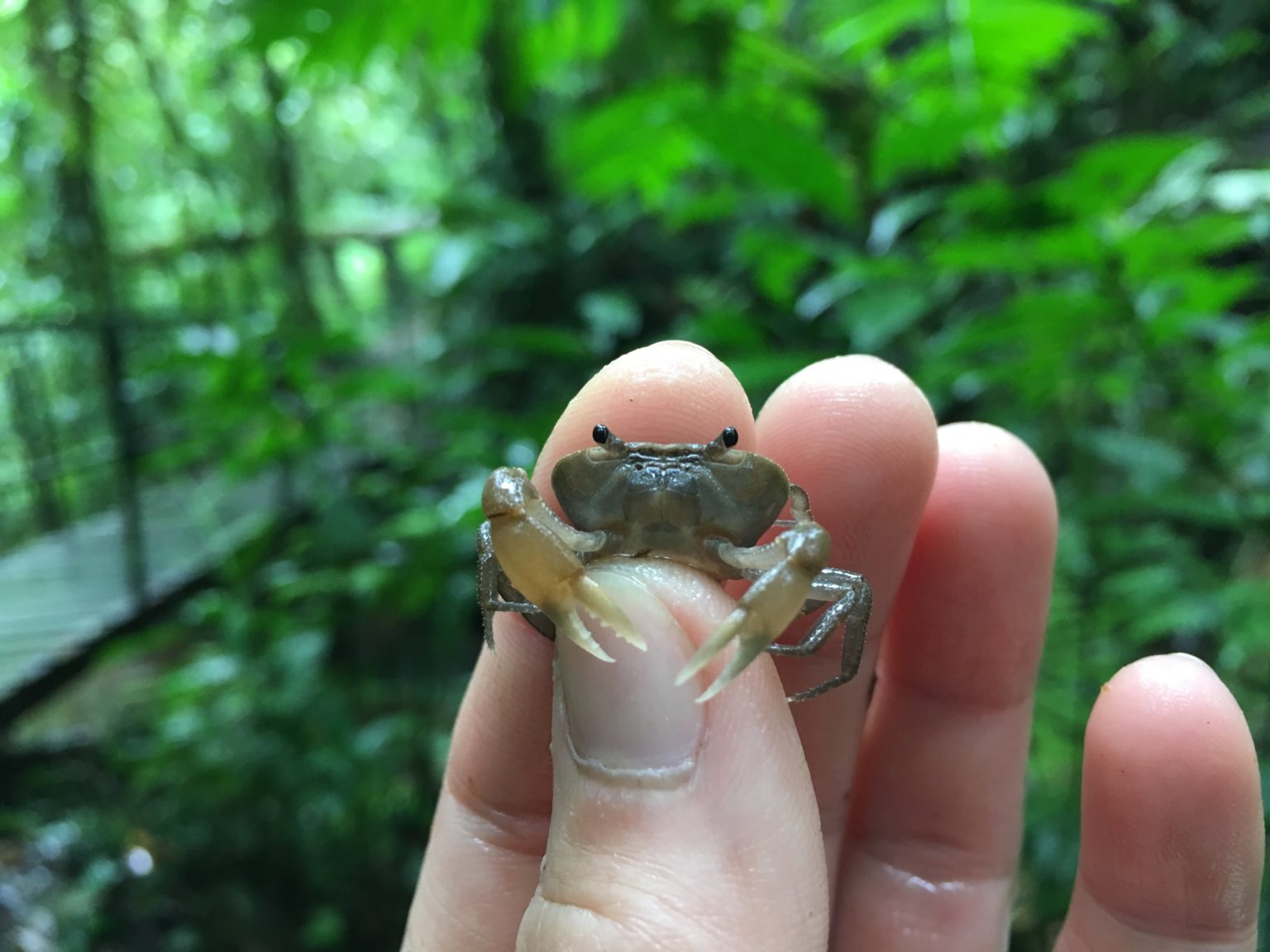Freshwater crabs play an important role in the breakdown of nutrients from natural materials that fall into streams, but few studies have looked into exactly how their relationships with other detritivores and the leaf litter itself impacts ecosystems.
River Basin Center graduate student Carol Yang shed light on these relationships in neotropical streams in two recently published papers.
In a paper published in Freshwater Biology, Yang did an in-stream experiment in Monteverde, Costa Rica to examine the leaf litter in enclosures that contained crabs as compared to enclosures without crabs. One dynamic that Yang and colleagues hoped to learn more about was the relationship between crabs and other detritivores—which contribute to leaf breakdown, but that crabs frequently prey upon.
Throughout the study, Yang and collaborators regularly sampled the leaf litter. They found that enclosures with crabs had faster rates of breakdown than those without, indicating that their manipulation and consumption of leaves had a larger impact than their consumption of other detritivores and shredders.
In a follow up study published in Nauplius, Yang used a laboratory setting to gain a more in-depth understanding of the crab behaviors that most impacted leaf litter. The crabs were collected from Monteverde, Costa Rica, and transported to aquariums along with unfiltered stream water and leaves from a common subcanopy tree.
Yang and colleagues found that the leaf mass was significantly higher in tanks with crabs than those without. They also used visual observations and recordings to watch as the crabs used their claws to grasp and shred the leaves, which aided in ingestion. At the end of the experiment, they observed that leaves in tanks with crabs were broken up into multiple pieces, whereas leaves in tanks without them remained whole.
These studies suggest that crabs play an important role in helping to process the detritus that accumulates in neotropical streams, especially given their abundance in tropical streams.

